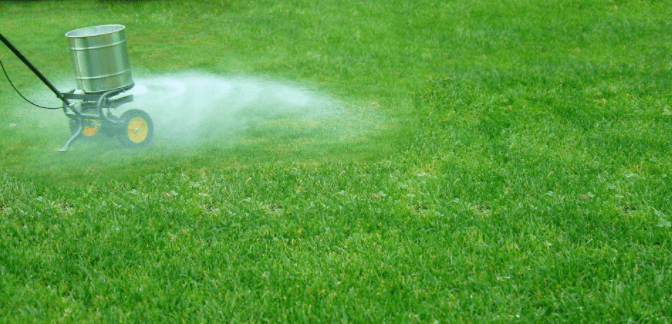With time, a change in acidity or alkalinity of soil will negatively impact your lawn grasses and other plants. Lime is essentially alkaline and it can be applied on a lawn when the soil tests confirm high levels of acidity.
Soil pH is a measure of the acidity or basicity of soil. Most plants including lawn grasses thrive in a pH range of 5.8 to 7.0. Soil pH is likely to change due to many reasons including natural leaching, the use of nitrogen fertilizers, and even the use of lime.
Highly acidic soil with a lower pH value is usually not good for most lawn grasses with exception of a few like centipede grass. It prevents the plants from absorbing essential nutrients which makes them appear weak and unhealthy.
While there are several telltale signs of acidic lawn soil, taking a sample soil for testing is a true confirmation. You can purchase testing kits at your nearest garden centers or take the sample to a local cooperative extension office for testing.
Lime is applied once the soil has been confirmed to be acidic. Traditionally wood ash can also be used for raising soil pH. Lime is a calcium-based mineral derived from limestone rocks or chalk.
It is typically applied to reduce soil acidity and improve nutrient availability for plants. Most nutrients for plant growth are available at pH 5.8 and 6.5.

How to tell if your lawn needs lime
When soil becomes too acidic, your once-healthy lush grass begins to struggle. There will be no improvement even with increased rounds of fertilizers and watering.
Weeds and plants that flourish in acidic conditions will start taking over your lawn. Further, the turf becomes vulnerable to insects, pests, and diseases.
With these signs alone, it is not yet done to think about liming your lawn. It is very essential to test the soil pH. Addition of lime to your lawn when not necessary is as well harmful to lawn grasses and other plants.
Collect soil samples from different points in your lawn and place them in a bucket. Remove any debris material air dry and mix the soil samples thoroughly. Take a pinch for analysis to get details about pH, soil type, and other amendments required for your lawn recovery. Be sure to inform the tester that you want to lime your lawn.
Soil test results from a local extension service will also recommend the amount of lime needed by your lawn based on the current pH level and mineral contents and soil structure. You will not have this information if you prefer to use a soil pH test kit.
When to apply lime to lawn
Lime usually takes several months to break down and bring a change to the soil acidity. Good timing helps in speeding up the process and keeping your grass safe. Soil pH testing and liming can be done in spring when soils begin to warm but fall is generally the best time to apply lime to your lawn.
The rain, snow, and freeze–thaw cycles experienced in fall and winter will help break down the lime faster to start raising the soil pH. In drought, season grass is stressed and thus not an ideal time for liming.
How to apply lime to your lawn
There are varieties of agricultural lime you can use to correct soil pH but your analysis report should recommend the type of lime to use. Often pulverized, powdered limestone or chalk forms of lime are recommended on lawns.
If the soil test indicates calcium deficiency, calcitic lime may be used or dolomitic lime for magnesium deficiency.
A spreader is commonly used for the application of lime. Carefully read and follow the product instructions and the soil testing report to know the correct amount of lime to use on your lawn.
Before applying lime on your established lawn, aerate to create spaces through which lime will easily get into the soil. Spread half of the recommended amount in one direction and the next half in a perpendicular direction to the first one for full coverage.
After the treatment, thoroughly water your lawn to help the lime penetrate into the soil.
Once added, lime will take 6 to 12 months to completely change the soil pH. To be sure, take a soil sample for professional testing. If the balance is not achieved, you will be advised to apply an additional round of lime.
Conclusion
After correcting your lawn soil pH, conduct tests test after every 1 to 2 years going forward for a possible amendment. Embark on healthy lawn care practices involving proper watering, fertilizing, mowing, and weed control and you will never have soil acidity problems in your lawn again.
Resources
- Liming Your Lawn: FSA6134. University of Arkansas Cooperative Extension Service – Aaron Patton, Assistant Professor, Turfgrass Specialist
- Liming Turfgrass Areas: PennState Center for Turfgrass Science – Peter Landschoot, PH.D